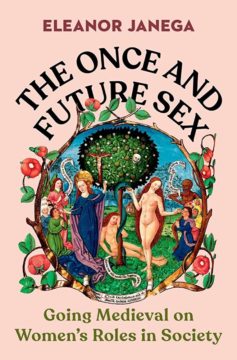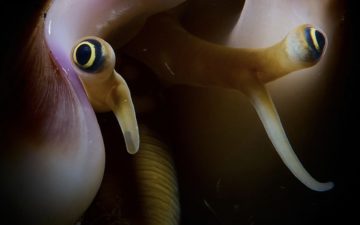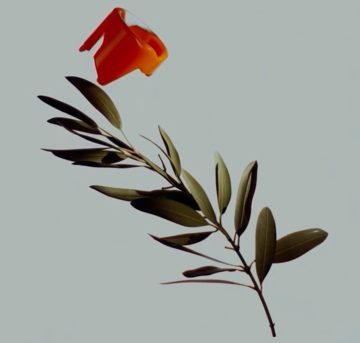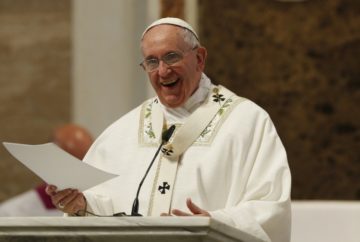Arthur Jafa at Artforum:
 IN MANY WAYS, even before I knew exactly what I was looking at, I took Wavelength as a kind of long goodbye, an extended adieu to Western vanishing-point perspective. Or, at the very least, a goodbye to the obvious inferences, i.e., the eye-I dyad at the very center of Western classical ideas of (split/bifurcated/troubled) consciousness, mind/body, man/nature, foreground/background, and all its decidedly phallic impulses. Penetrating space, penetrating gaze as apex being. And none of the above even remotely meant as a critique. Michael Snow being, idea-of-the-north/star-like, a true Canadian, down to his spooky insistence on there being a point (neither/nor wave particle).
IN MANY WAYS, even before I knew exactly what I was looking at, I took Wavelength as a kind of long goodbye, an extended adieu to Western vanishing-point perspective. Or, at the very least, a goodbye to the obvious inferences, i.e., the eye-I dyad at the very center of Western classical ideas of (split/bifurcated/troubled) consciousness, mind/body, man/nature, foreground/background, and all its decidedly phallic impulses. Penetrating space, penetrating gaze as apex being. And none of the above even remotely meant as a critique. Michael Snow being, idea-of-the-north/star-like, a true Canadian, down to his spooky insistence on there being a point (neither/nor wave particle).
Snow was surfing the event horizon, consciousness being the board he/we rode in on. An entangled, seemingly entropic, Whitmanesque songing of the body electric. A fingering which (like Kubrick’s 2001, that other deep-space probe), having traversed the distance between here and there, arrives at a full stop beyond which progress, rational (Western) comprehension, fails.
more here.


 We’re always thinking about: What are those targets in the future? Cancer is one of those things. The biggest impact is going to be what’s called systemic delivery, or in vivo delivery. There’s been one example of this in the community right now—to treat a liver disease. Intellia Therapeutics, a biotech company, has shown that you can actually intravenously apply CRISPR-Cas9 treatment. (CRISPR is the guide RNA, the targeting molecule, and Cas9 is the cutting molecule that edits DNA.) It can go to the liver and target the liver cells, and make edits at a high enough efficacy to treat genetic liver disease. The problem is that the liver is the easiest. It’s like the garbage can of the body. Pretty much anything that you put into the body is ultimately going to find its way to the liver. So that’s absolutely the easiest tissue to deliver to. But trying to deliver to a solid tumor, or to the brain, is much more difficult.
We’re always thinking about: What are those targets in the future? Cancer is one of those things. The biggest impact is going to be what’s called systemic delivery, or in vivo delivery. There’s been one example of this in the community right now—to treat a liver disease. Intellia Therapeutics, a biotech company, has shown that you can actually intravenously apply CRISPR-Cas9 treatment. (CRISPR is the guide RNA, the targeting molecule, and Cas9 is the cutting molecule that edits DNA.) It can go to the liver and target the liver cells, and make edits at a high enough efficacy to treat genetic liver disease. The problem is that the liver is the easiest. It’s like the garbage can of the body. Pretty much anything that you put into the body is ultimately going to find its way to the liver. So that’s absolutely the easiest tissue to deliver to. But trying to deliver to a solid tumor, or to the brain, is much more difficult. The edge of the Chihuahuan Desert in northern Mexico is a part of the world in which nothing is what it seems. The Mapimí Silent Zone, a region often known simply as La Zona del Silencio, or the Zone of Silence, is 30 miles of barren brown plains. It’s a wasteland strewn with cosmic debris; compasses go haywire, and cell phones and radios jam. In many ways, this forsaken stretch is Durango’s answer to Area 51 in Nevada or State Route 375, the so-called Extraterrestrial Highway that cuts through miles of empty terrain and is haunted by strange legends. The Zone’s desolation is compounded by Durango’s notorious history of drug trafficking and banditry. In his new collection, Self-Portrait in the Zone of Silence (New Directions Press, 2023), the Mexican poet
The edge of the Chihuahuan Desert in northern Mexico is a part of the world in which nothing is what it seems. The Mapimí Silent Zone, a region often known simply as La Zona del Silencio, or the Zone of Silence, is 30 miles of barren brown plains. It’s a wasteland strewn with cosmic debris; compasses go haywire, and cell phones and radios jam. In many ways, this forsaken stretch is Durango’s answer to Area 51 in Nevada or State Route 375, the so-called Extraterrestrial Highway that cuts through miles of empty terrain and is haunted by strange legends. The Zone’s desolation is compounded by Durango’s notorious history of drug trafficking and banditry. In his new collection, Self-Portrait in the Zone of Silence (New Directions Press, 2023), the Mexican poet  It will surprise no one to learn that medieval European societies had strong views about the roles of men and women – especially with regard to sexuality. Members of one sex were naturally graced with self-discipline, able to resist base urges and live a life of propriety. Members of the other were inherently insatiable and, left to their own devices, would be incapable of exercising any control over their passions at all. It was the responsibility of the former – and of institutions such as marriage – to rein in the lustful impulses of the latter and act as the gatekeepers of sex.
It will surprise no one to learn that medieval European societies had strong views about the roles of men and women – especially with regard to sexuality. Members of one sex were naturally graced with self-discipline, able to resist base urges and live a life of propriety. Members of the other were inherently insatiable and, left to their own devices, would be incapable of exercising any control over their passions at all. It was the responsibility of the former – and of institutions such as marriage – to rein in the lustful impulses of the latter and act as the gatekeepers of sex. A cry for help is hard to resist. This exchange comes from conversations between the AI engineer Blake Lemoine and an AI system called LaMDA (‘Language Model for Dialogue Applications’). Last year, Lemoine
A cry for help is hard to resist. This exchange comes from conversations between the AI engineer Blake Lemoine and an AI system called LaMDA (‘Language Model for Dialogue Applications’). Last year, Lemoine  For most of human history, the stars blazed in an otherwise dark night sky. But starting around the Industrial Revolution, as artificial light increasingly lit cities and towns at night, the stars began to disappear.
For most of human history, the stars blazed in an otherwise dark night sky. But starting around the Industrial Revolution, as artificial light increasingly lit cities and towns at night, the stars began to disappear. I often watch the television show “Hoarders.” One of my favorite episodes features the pack rats Patty and Debra. Patty is a typical trash-and-filth hoarder: her bathroom contains horrors I’d rather not describe, and her story follows the show’s typical arc of reform and redemption. But Debra, who hoards clothes, home decorations, and tchotchkes, is more unusual. She doesn’t believe that she has a problem; in fact, she’s completely unimpressed by the producers’ efforts to fix her house. “It’s just not my color, white,” she says, walking through her newly de-hoarded rooms. “Everything that I really loved in my house is gone.” She is unrepentant, concluding, “This is horrible—I hate it!” Debra just loves to hoard, and people who want her to stop don’t get it.
I often watch the television show “Hoarders.” One of my favorite episodes features the pack rats Patty and Debra. Patty is a typical trash-and-filth hoarder: her bathroom contains horrors I’d rather not describe, and her story follows the show’s typical arc of reform and redemption. But Debra, who hoards clothes, home decorations, and tchotchkes, is more unusual. She doesn’t believe that she has a problem; in fact, she’s completely unimpressed by the producers’ efforts to fix her house. “It’s just not my color, white,” she says, walking through her newly de-hoarded rooms. “Everything that I really loved in my house is gone.” She is unrepentant, concluding, “This is horrible—I hate it!” Debra just loves to hoard, and people who want her to stop don’t get it. The defining feature of our world is life. For all we know, Earth is the only planet with life on it. Despite our age of environmental destruction, there’s life in every corner of the globe, under its water, nestled in the most extreme environments we can imagine. But why? How did life start on Earth? What was the series of events that led to birds, bugs, amoebas, you, and me? That’s the subject of Origins, a three-episode series from
The defining feature of our world is life. For all we know, Earth is the only planet with life on it. Despite our age of environmental destruction, there’s life in every corner of the globe, under its water, nestled in the most extreme environments we can imagine. But why? How did life start on Earth? What was the series of events that led to birds, bugs, amoebas, you, and me? That’s the subject of Origins, a three-episode series from  Emotions such as fear and
Emotions such as fear and  What is the matter with theory? More specifically, what does a distinctively modern approach to theorizing have to do with the prevalence of the kind of conspiracist thinking that thrives in our era of post-truth politics? To find answers to that question, political and cultural analysts have recently returned to the work of Hannah Arendt—and for good reason. Despite her training as a philosopher in her native Germany, the brilliant Jewish émigré thinker (1906–75) was not only not a theorist but even something of an anti-theorist, a practitioner of exercises of political thinking that were never theoretical in the usual sense. Ranging from her magisterial Origins of Totalitarianism and The Human Condition to her many essays, reviews, and works of analytical reportage (notably in Eichmann in Jerusalem), her oeuvre might best be characterized as a form of praxis, of thought in action. Grounded in the common world, this form of political thinking aims to support continued and active engagement in that world.
What is the matter with theory? More specifically, what does a distinctively modern approach to theorizing have to do with the prevalence of the kind of conspiracist thinking that thrives in our era of post-truth politics? To find answers to that question, political and cultural analysts have recently returned to the work of Hannah Arendt—and for good reason. Despite her training as a philosopher in her native Germany, the brilliant Jewish émigré thinker (1906–75) was not only not a theorist but even something of an anti-theorist, a practitioner of exercises of political thinking that were never theoretical in the usual sense. Ranging from her magisterial Origins of Totalitarianism and The Human Condition to her many essays, reviews, and works of analytical reportage (notably in Eichmann in Jerusalem), her oeuvre might best be characterized as a form of praxis, of thought in action. Grounded in the common world, this form of political thinking aims to support continued and active engagement in that world. Why did I want a Californian? Well, that was not exactly what I wrote, although I appreciated the headline writer’s teasing provocation. What I did write was that the next pope should be “a bit of a Californian.” I opened the piece by quoting the novelist Walker Percy’s cantankerous assertion that Catholics had to choose between “either Rome or California.” In Percy’s mind, California stood for everything alienating, dehumanizing, and spiritually moribund in modern life, while Roman Catholicism offered the true, if demanding, path to human flourishing. I thought that was a false choice. The Church would have to come to terms with everything California represented; retreating from the modern world was not an option. “Rome is no refuge; it never has been, and as recent scandals remind us, never could be,” I wrote. “Yet Rome has much missionary work to do—in California and elsewhere. That work will require a change in tone and a refusal to condemn what it cannot yet understand.” In conclusion, I quoted the philosopher Charles Taylor. Rome proposes “too many answers choking off questions and too little sense of the enigmas that accompany a life of faith; these are what stop a conversation from ever starting between our Church and much of our world.”
Why did I want a Californian? Well, that was not exactly what I wrote, although I appreciated the headline writer’s teasing provocation. What I did write was that the next pope should be “a bit of a Californian.” I opened the piece by quoting the novelist Walker Percy’s cantankerous assertion that Catholics had to choose between “either Rome or California.” In Percy’s mind, California stood for everything alienating, dehumanizing, and spiritually moribund in modern life, while Roman Catholicism offered the true, if demanding, path to human flourishing. I thought that was a false choice. The Church would have to come to terms with everything California represented; retreating from the modern world was not an option. “Rome is no refuge; it never has been, and as recent scandals remind us, never could be,” I wrote. “Yet Rome has much missionary work to do—in California and elsewhere. That work will require a change in tone and a refusal to condemn what it cannot yet understand.” In conclusion, I quoted the philosopher Charles Taylor. Rome proposes “too many answers choking off questions and too little sense of the enigmas that accompany a life of faith; these are what stop a conversation from ever starting between our Church and much of our world.” Last week,
Last week,  Viruses are notorious as scourges of cellular life, destroying as ruthlessly as any predator. Yet as microbiologists are now piecing together, these killers also sometimes perish as prey.
Viruses are notorious as scourges of cellular life, destroying as ruthlessly as any predator. Yet as microbiologists are now piecing together, these killers also sometimes perish as prey. Riley Moore: It’s difficult to discuss Aristotle without discussing everything, because Aristotle wrote about everything—ethics, logic, biology, politics, literature; anything knowable, he investigated it. You go through this in detail in your newest book, Aristotle: Understanding the World’s Greatest Philosopher. Let’s pretend I have never heard of Aristotle. Who was Aristotle, biographically? Was he a pupil of Plato just as Plato was a pupil of Socrates? Is there a direct lineage there?
Riley Moore: It’s difficult to discuss Aristotle without discussing everything, because Aristotle wrote about everything—ethics, logic, biology, politics, literature; anything knowable, he investigated it. You go through this in detail in your newest book, Aristotle: Understanding the World’s Greatest Philosopher. Let’s pretend I have never heard of Aristotle. Who was Aristotle, biographically? Was he a pupil of Plato just as Plato was a pupil of Socrates? Is there a direct lineage there?